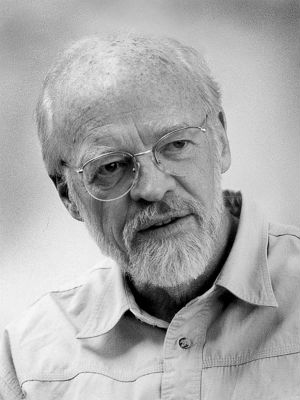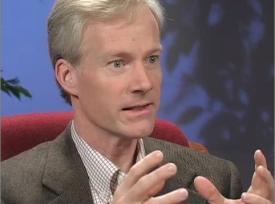 Eugene Peterson, author of The Message
Eugene Peterson, author of The MessageBy Neil Earle
 Eugene Peterson, author of The Message
Eugene Peterson, author of The MessageA recent PEW survey showed that Christianity seemed to be declining in the United States based on opinions, attendance figures and the slow growth in agnosticism and “nones” – those with no active religious preference.
Should we be discouraged?
Not really. Not when we consider the almost powder-keg growth in parts of the Third World. Alert pastors have always known that nominalism – a professing kind of faith only – has been a hallmark of Christianity in the North Atlantic region for decades. Anyone reading one of Eugene Peterson’s books would pick that up.
There are excellent reasons for persevering with godly and kindly witness in North America and one of them is found in Christianity’s impressive intellectual and philosophical tenets, what some have called the Faith’s “triple punch” of Incarnation, Resurrection and Ascension.
Let’s review this today, for Christianity is a way of life and an explanation of life based around the stark realities of crucifixion, of crucifixion, burial and resurrection. Nd resurrection leading to the ascension and enthronement of earth’s one true Ruler. For starters, there is that most memorable scene in that most memorable book, the Book of Revelation. It’s found in Revelation 4 and 5.
John has dropped in on a mighty big worship service (4:8). Everyone is praising the One sitting on the throne, the One we know as God the Father. But where is Jesus? Then John notices the One on the throne has a book in his hand sealed with seven seals. This book contains the future for John’s churches, many of them facing death and persecution (Revelation 2:10).
But – a problem! No one is found worthy in heaven or earth to open the book. But an elder tells John, “Don’t worry. The Lion of the tribe of Judah is worthy to open the book.” John looks towards the throne again and he sees… not a Lion but a Lamb in the midst of the throne. And almost incredibly, the Lamb is bearing marks of slaughter “as if it had been slain” (5:6).
The Lamb of course is the representation of Christ. But John sees him very much as he was when he appeared to the disciples back on earth in the upper room (Luke 24:36). He is carrying his wounds! Astonishingly, here in heaven, Jesus still bears the marks of his crucifixion. That is why though he is our Mediator is in heaven he is called the Man Jesus Christ, in 1 Timothy 2:5.
To Trinitarian theologians such as Thomas Torrance this is a significant insight, one which disciples of John Calvin have always known. For it shows that even in his ascended, exalted state, Jesus has not cast off the evidence of his incarnation. All heaven remembers when they see the symbolic Lamb with marks of slaughter that this was God who became a man, “Jesus who died, now glorified, King of all Kings,” as the song says. He is the God who lived among us in our blight and sin and returned to heaven as the God-Man, making reconciliation between heaven and earth.
It is a mind-expanding concept.
 Mount of Olives outside Jerusalem from where Jesus ascended.
Mount of Olives outside Jerusalem from where Jesus ascended.The respected Scottish theologian Thomas Torrance explained it this way:
“[Thus] the church is founded not simply on the words of Jesus to Peter but upon the oneness of God and man which in the birth of Jesus was inserted into our human existence, which reached through the whole course of his earthly life and particularly of his ministry, into the atonement and resurrection, and then into the ascension…”
The ascension of Jesus the God-Man is absolutely essential to God’s plan of salvation. It is part of and dramatically completes the full story of Jesus. One Christian writer puts it this way. “The ascension completes the resurrection. Without the resurrection Christ’s death would be meaningless as far as the great issues of life are concerned. And without the ascension the resurrection would also be incomplete. We would have a resurrected person, but not one who was now at God’s right hand in the place of authority.”
This alone should set Christian hearts a-thumping, but there is so much more:
“The New Testament was written by men who were thoroughly convinced that Jesus was at the right hand of the Father, and that through the ministry of the Holy Spirit they were in union with this ascended Lord.” True. The active pervasive ministry by the Holy Spirit is a major facet of the Trinity teaching. Grasping this fully gave them the confidence to face their deadly foes among the Jewish hierarchy. It led Stephen the first martyr to face death with absolute assurance (Acts 4:13; 7:59-60).
As Griffith Thomas phrased it: “The spiritual value of the Ascension lies not in Christ’s physical remoteness but in His spiritual nearness. He is free from earthly limitations and His life above is the promise and guarantee.”
Pastor Valwoord stated: “The ascension is the important link between His work on earth and His work in heaven which begins with the ascension.” The Holy Spirit makes that link effective. As K.Giles puts it in The Dictionary of Jesus and the Gospels, “The Spirit is none other than the presence of Jesus (Acts 16:7), albeit in another form.” Many teachers understand this, that the ascension and resultant enthronement of Jesus at the Father’s right hand makes possible our capacity for ministry to this world and also our being enabled to live and act for him.
Or as Torrance puts it: “The koininia (fellowship) thus created by the atonement and resurrection of Christ is fully actualized in our midst by the outpouring of the Holy Spirit (see Acts 2: 33) and is maintained by the power of the Spirit as the church continues in the fellowship of word and sacrament…”
It is in this sense that Paul said believers already have access to heaven through the One who was both God and man. Jesus ahs gone ahead as the Forerunner (Hebrews 6:20. Paul wrote the Ephesians that the process of incarnation, resurrection and ascension has “made us alive together with Christ and raised us up together and made us sit together in the heavenly places in Christ Jesus” (Ephesians 2:5-6). We are accepted in the Beloved Son who even now bears the marks of his victory over the forces of sin and death (Ephesians 1:6).
This is a major theme in Torrance theology and it means that the good news is really very good indeed: “Jesus acted out the will of God to be one with us and gather men and women into the heart of God…The chasm that separates man from God is the black abyss of hell. And Christ descended into that hell in order to redeem. He is the Mediator descended into the black pit of human alienation from God in order to save. In his own incarnate person – true God and true man – he united man and God and bore the guilt of man before the presence of God. (Incarnation, pages 107, 255).
Through his resurrection and ascension Jesus now ever lives to make intercession for us. If our sins are important to us – and they should be since they potentially block the way to God--then the Ascension is mightily important indeed. It completes the picture of what Jesus did from Bethlehem to Calvary to the Upper Room and then into heaven itself.
 Gerrit Dawson
Gerrit DawsonLook at from this long-range holistic perspective, the entire life of Jesus before and after his incarnation reveals that the story of salvation begins not with rescue from our sins (“negative righteousness”) but with God’s loving desire to share his glory with us (“positive righteousness”). Sin is thus a subset – though an important one – of God’s move to rescue us.
“In short, the story goes like this,” says Gerrit Dawson. “The Son of God came to us as the man Jesus to restart the human race (the Second Adam). He took to himself our very bone and skin, heart and mind. Jesus was the root out of which a new humanity would arise. This is possible because in Jesus God truly joined himself to our ruined, wrecked, sin-sick, fallen humanity, then transformed it“(Romans 8:3).
And all this redeeming activity – Trinitarians remind us – is based on God’s love more than it is triggered by our sins. It is love that constrains us, as Paul said in 2 Corinthians 5:14. This is immeasurably more true of the Father, Son and Holy Spirit’s good feelings towards us for God in his essence is love. Dawson continues:
“In our flesh he won the victory of perfect obedience even through the agony of Gethsemane and death upon the cross (Philippians 2:8). Then, passing through death into resurrection, Jesus in our flesh was transformed. He was outfitted for heaven, the realm of God, clothed with a body fit for life in the intimate and immediate presence of his Father (John 20:17). “
And here Dawson comes to the point we raised earlier: “Even now he remains in our skin, glorified yet still essentially us (1 Timothy 2:5; Revelation 5:6, 12). For, in his ascension, he has taken what we are, in our embodied existence, into the eternal Triune life of God…Christ joins us to himself. He unites us to his new humanity by sending the Holy Spirit into our hearts (Acts 2:33).
The Spirit quickens us to new life, creates faith in us, and enables us to be born from above into the body of Christ our head. This is the real meaning of being “born again.” The source of the Christian’s invincible life-defeating hope is that in Christ, we too, are a new creation right now (2 Corinthians 5:17). “We are given to share,” adds Dawson, “ as the Spirit unites us to the one who has already united himself to us, in the positive righteousness of his obedient and loving life (John 14:23)…beyond the ‘negative righteousness’ of the remission of sins…”
The news is pretty good so far, but there is more, as Dawson concludes: “Then, on the last day, even our lowly bodies will be transformed to be like Christ’s glorious body (Philippians 2:21). We, too, will be outfitted for perfect communion in the Triune God”
(An Introduction to Torrance Theology, pages 71, 57).
Today, we have been exploring the “title deeds” of Christianity which relate very much to the full and total life of Jesus before and after his humanity and what that means for us. One of these meanings is perfect communion in the Triune God
Oh yes, these are great mysteries of the Faith but they pivot wondrously around the basic teaching of Christ and his work with the Church through the Spirit. Jesus told his first disciples early in their careers, If I told you earthly things and you cannot believe, how shall you believe if I tell you heavenly things (John 3:12)? Early Christians had to invent new words to help explain all of these things – trinity, incarnation, perichoresis, homoousia. But the New Testament is adamant – Incarnation, Resurrection, and Ascension – Christianity’s triple punch, endures now and always.
Let’s get the message out.